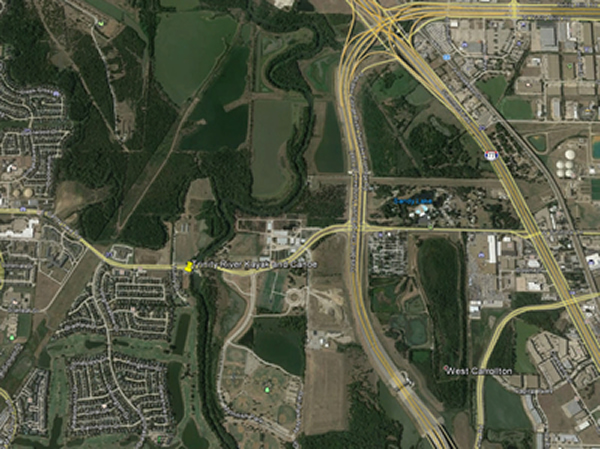

| Date: June 22, 2013 | Sponsor: DDRC | |
| River: Trinity River, Elm Fork @ Sandy Lake | Trip Leader: Dale Harris | |
| Reach: Trinity River Kayak (1601 E. Sandy Lake Rd., Coppell 75019) Sandy Lake Rd to TW Richardson Park | Phone: 972-814-2633 | |
| Difficulty: Flatwater - no rapids * (See scale below) | E-mail: dale_harris@sbcglobal.net | |
| Rendezvous: IH 30 at University (Trinity Park), 6:30 PM | ||
| Advisory: We cannot predict the temperature for June or July, so please be on alert for a "heat" advisory. And, use your own judgment in attending this event. |
Event Description: Seminar on what it takes to go camping out of your kayak. This seminar is targeted for beginners, intermediate, and experienced kayakers who what to get in to camping on the river but are not sure what it takes. The seminar will cover what gear is recommended, how to pack it into your kayak, and the basics of camping on the river.
This event is free but it has limited seats so please contact Dale Harris at president@down-river.com or 972-814-2633 if to RSVP.
Gear requirements: bring a lawn chair.
Back-up Plans: In case of foul weather we will reschedule this seminar - be sure to check the DDRC WEB page and Meetup for up to date status.
Driving Directions: I-35E or President George Bush Toll Rd to Sandy Lake Road, go west on Sandy Lake Rd to “1601 E. Sandy Lake Rd” If you are heading West on Sandy lake , you'll need to make a U turn after you cross the Trinity River.
|
 download Google Earth locator |
| * International Scale of River Difficulty
Class I: Easy. Fast moving water with riffles and small waves. Few obstructions, all obvious and easily missed with little training. Risk to swimmers is slight, self-rescue is easy.
Class II: Novice. Straightforward rapids with wide, clear channels which are evident without scouting. Occasional maneuvering may be required, but rocks and medium sized waves are easily missed by trained paddlers. Swimmers are seldom injured and group assistance, while helpful, is seldom needed. Class III: Intermediate. Rapids with moderate, irregular waves which may be difficult to avoid and which can swamp an open canoe. Complex maneuvers in fast current and good boat control in tight passages or around ledges are often required; large waves or strainers may be present but are easily avoided. Strong eddies and powerful current effects can be found, particularly on large-volume rivers. Scouting is advisable for inexperienced parties. Injuries while swimming are rare; self-rescue is usually easy but group assistance may be required to avoid long swims. Class IV: Advanced. Intense, powerful but predictable rapids requiring precise boat handling in turbulent water. Depending on the character of the river, it may feature large, unavoidable waves and holes or constricted passages demanding fast maneuvers under pressure. A fast, reliable eddy turn may be needed to initiate maneuvers, scout rapids, or rest. Rapids may require "must" moves above dangerous hazards. Scouting is necessary the first time down. Risk of injury to swimmers is moderate to high, and water conditions may make self-rescue difficult. Group assistance for rescue is often essential but requires practiced skills. A strong eskimo roll is highly recommended. Class V: Expert. Extremely long, obstructed, or very violent rapids which expose a paddler to above average endangerment. Drops may contain large, unavoidable waves and holes or steep, congested chutes with complex, demanding routes. Rapids may continue for long distances between pools, demanding a high level of fitness. What eddies exist may be small, turbulent, or difficult to reach. At the high end of the scale, several of these factors may be combined. Scouting is mandatory but often difficult. Swims are dangerous, and rescue is difficult even for experts. A very reliable eskimo roll, proper equipment, extensive experience, and practiced rescue skills are essential for survival. Class VI: Extreme. One grade more difficult than Class V. These runs often exemplify the extremes of difficulty, unpredictability and danger. The consequences of errors are very severe and rescue may be impossible. For teams of experts only, at favorable water levels, after close personal inspection and taking all precautions. This class does not represent drops thought to be unrunnable, but may include rapids which are only occasionally run. |
| Copyright © 1996-2011, Dallas Downriver Club. All rights reserved.You may not copy, distribute, or use these materials except for your personal, non-commercial use. Any trademarks are the property of their respective owners. All original photographic images are the exclusive property of Dallas Downriver Club or other designated photographers and may not be copied, duplicated, reproduced, distributed or used in any manner without prior written permission of the copyright owner under penalty of US and International laws and treaties. Last updated May 10, 2012 |